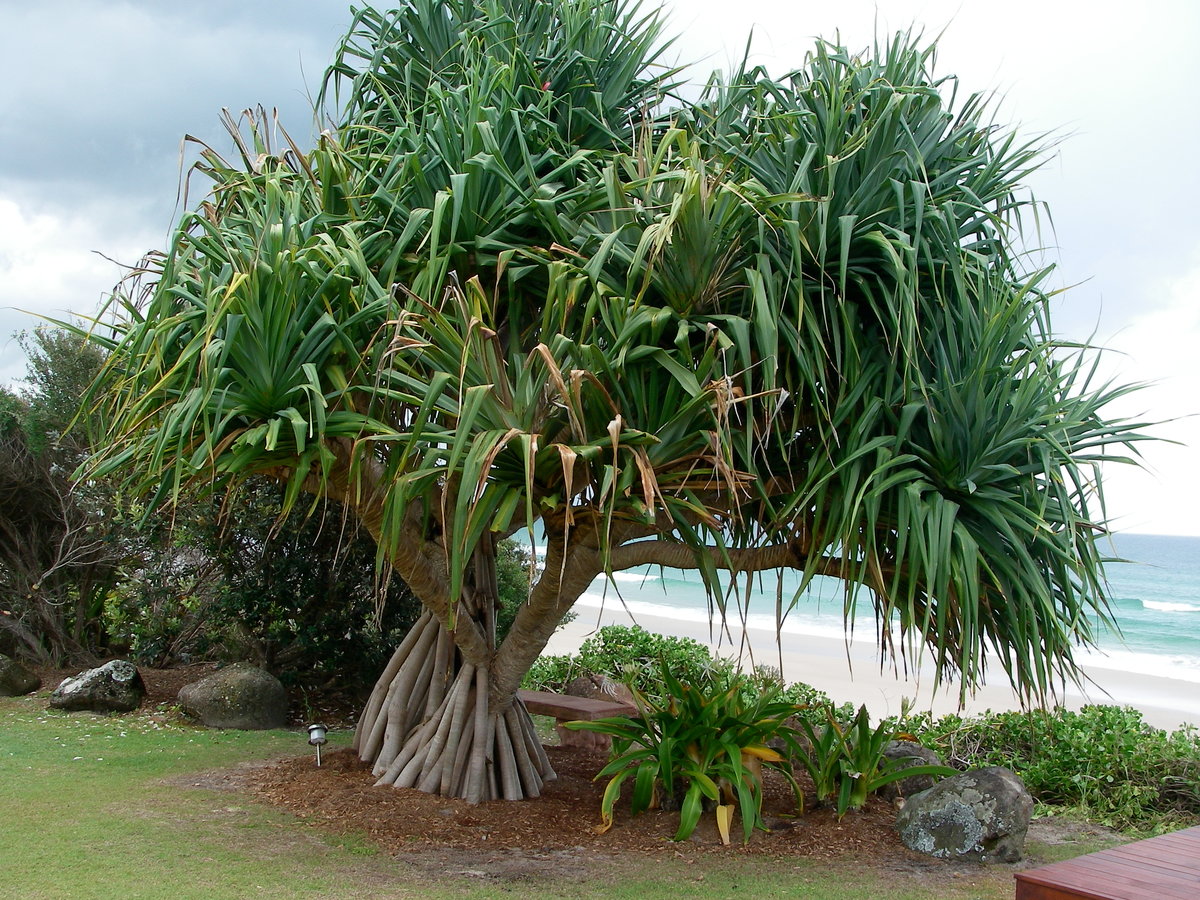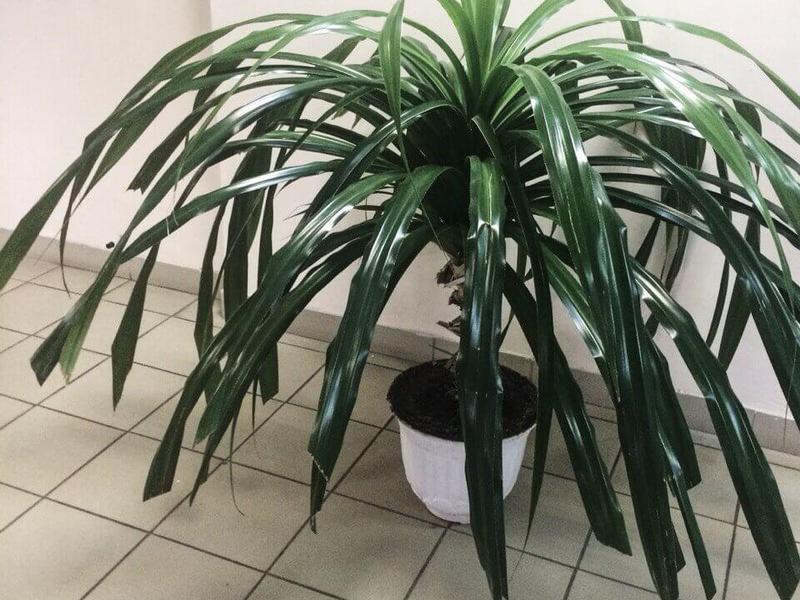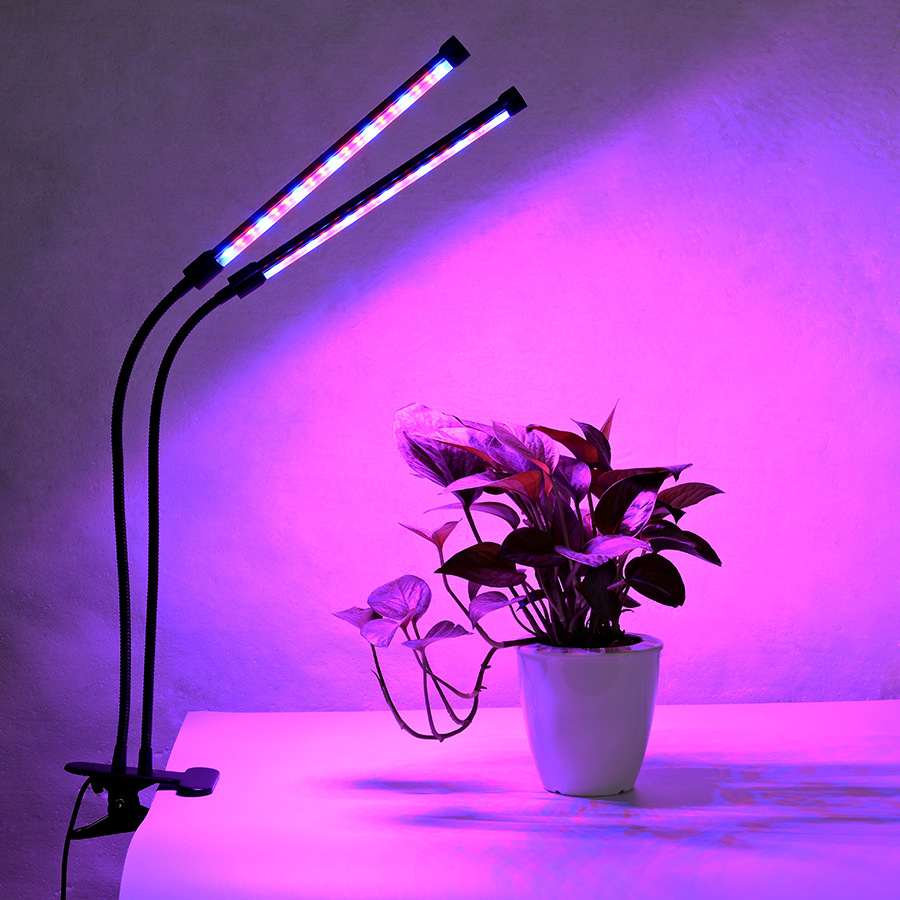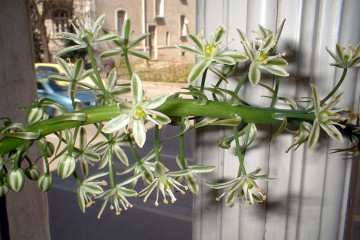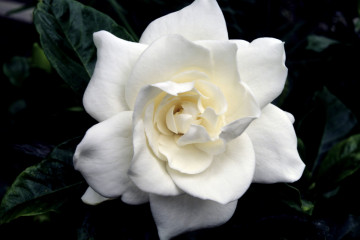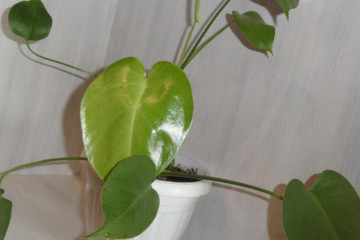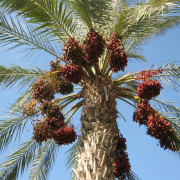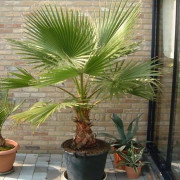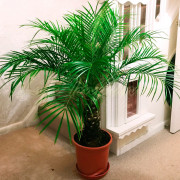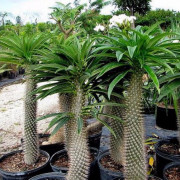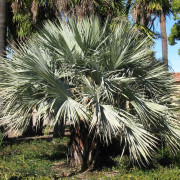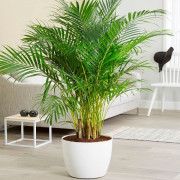Pandanus flower - what kind of houseplant?
Content:
Pandanus is a flower native to tropical Africa. It is a palm tree up to 3 meters tall (in the wild) with long thorny leaves. Pandanus, or pandanus, can be grown at home. Due to its unpretentiousness, it is suitable for novice gardeners.
Plant appearance
Pandanus is a palm tree with a short brown trunk and long, up to 120 cm, belt-like leaves. The leaf plate has a pronounced longitudinal vein, is colored green, and short, prickly, but not poisonous thorns grow along its edge. The second name given to the pandanus is the helical palm. It is associated with the location of the leaves: they grow in a spiral, tightly adjacent to each other.
The spreading crown of pandanus in its natural environment can reach 13 meters in height, but in apartments the palm tree rarely grows more than 300 cm.In the jungles of Africa, you can find pandanas with clusters of fruits that vaguely resemble pineapples. They are edible and sweet with almost no seeds. Due to the pleasant taste characteristics of the pulp, helical palms are even cultivated.
Home varieties
The genus Pandanus has over 700 species, but most of them grow only in the tropics. Among indoor pandanuses, 4 varieties of flowers are distinguished:
- Pandanus Veitch, or Veitch (Pandanus Veitchii). Thorns are light brown, leaf plates with white stripes. Hardened aerial roots go down from the stem. It grows slowly, not exceeding 150 cm in height.
- Pandanus utilis. It is distinguished by a branched woody trunk and a spreading screw crown. The foliage is dark green, up to 130 cm, with serrated edges.
- Pandanus Sanderi It differs in leaves, which are decorated with several light yellow stripes. Compared to other varieties, leaf plates are medium-sized, up to 80 cm long and 5 cm wide. Thorns are light brown.
- Covering Pandanus (Pandanus tectorius). The crown is pyramidal, the plant itself rises above the ground due to pronounced aerial roots. It can grow up to 400 cm in height. The sheet plates are solid and rigid.
Home care for pandanus
No matter how unpretentious the pandanus is, it needs proper care at home. You should adhere to a certain temperature regime, recommendations for watering and feeding.
Illumination and temperature conditions
In autumn and winter, the palm tree needs bright lighting; in spring and summer, the bush needs to be shaded. It is recommended to place the plant pot on the west or east window.
Since pandanus grows naturally in the tropics, lack of light can lead to the weakening of the flower. With a constant lack of ultraviolet radiation, the foliage becomes soft, drops and turns yellow, decorative varieties lose their original color. If the palm tree lacks lighting, it is necessary to purchase a phytolamp and turn it on for 6-8 hours a day.
It is impossible to illuminate the pandanus from only one side, otherwise the foliage will develop unevenly.To ensure that all parts of the flower receive ultraviolet light, the pot should be rotated regularly.
The minimum temperature of the content is +15 ° C. Optimal air heating is + 22 ... + 24 ° С.
Watering frequency and air humidity
It is not necessary to maintain special air humidity for pandanus. It is enough occasionally, on hot summer days, to place the pot with the plant on moistened pebbles. Spraying is also allowed, but this procedure must be performed carefully so that moisture does not get into the leaf axils: rot easily develops in them.
The aerial roots need additional moisture. They rarely form when grown in an apartment, but if they do appear, they must be sprayed or covered with wet moss. It is especially important to ensure that the aerial roots do not dry out during the summer. If they dry, the plant may die.
The rules for watering pandanus are as follows:
- The water should be warm, + 30… -35 ° C, settled.
- Watering is carried out 3 days after the topsoil has dried. The substrate must not be allowed to dry out.
- Excess liquid accumulated in the pan is removed 30 minutes after irrigation.
In autumn and winter, the frequency of watering is reduced.
Soil composition and fertilizers
Palm substrate should consist of the following components in equal proportions:
- leafy soil;
- sod soil;
- humus;
- sand.
Fertilizers are required from March to October. Top dressing is applied to the soil twice a month. Any liquid mineral formulation for deciduous plants can be used. It is important to dilute the fertilizers strongly so that they cannot cause a burn of the rhizome. In winter, you do not need to take additional care of the root system.
Selection of capacity
Due to the developed root system, pandanus require tall pots. The material of the container does not matter. A third of the pot should be filled with expanded clay or another compound suitable for creating drainage.
Transfer
Transplantation of young plants is carried out once a year, adults - 1 time in 2-3 years. To determine that a flower needs a new pot, you can use the root system. When it becomes cramped for her, you need to pick up a more capacious container.
The root system has the ability to break from any pressure, so the flower should be transplanted carefully, using the transshipment method. A lump of earth from the old pot is preserved, and aerial roots cannot be broken off.
Reproduction of helical palm
The pandanus palm is propagated by grafting and dividing the bush. There is also a seed growing method, but it will not work to repeat it at home. Fresh fruits are required for planting.
Cuttings
Step-by-step instructions on how to propagate pandanus by cuttings:
- Cut off part of the rosette with aerial roots. At the parent flower, the cut site is treated with ash or a special compound that prevents the appearance of rot.
- Prepare the soil (make a mixture of peat, sand and sphagnum). Take a mini greenhouse or cover film.
- The cuttings are deepened into the soil, watered. Then they are covered with a film or placed in a greenhouse.
- Keep them like this at a temperature of + 24 ... + 27 ° C for 4-7 weeks, regularly airing and watering.
After 1-2 months, the cutting will take root and the plant can be transplanted into a permanent pot.
From the lateral processes
In some species, lateral processes are constantly formed. They arise at the base of the stem and have their own root system. When the leaves of the shoots have reached a length of 20 cm, they can be removed using a sharp garden knife. 1-2 weeks "kids" are kept in the soil from a mixture of peat and sand, then transplanted into a standard substrate.
Diseases and pests
Indoor pandanus rarely gets sick and is weakly affected by pests. Insects such as scale insects and scale insects are occasionally found on palms. They should be removed with store-bought insecticides: "Aktara", "Karbofos".Dilution and handling instructions are indicated on the packaging.
The influence of pandanus on the atmosphere in the house
According to the signs, if you keep the pandanus like a houseplant, it will cause a surge of energy. This magic has a positive effect on apathetic people: they become capable of new achievements, they cease to feel constant fatigue. There are also benefits from pandan for children who find it difficult to learn school subjects: just put a palm tree in the room and problems with concentration and memorization will disappear. But for people with an irritable character, it is better not to have this flower at home. He will cause a surge of aggression, which can lead to domestic fights.
Pandanus is great for home greenhouses, balconies, simple windowsill maintenance. Due to its unpretentiousness, the palm tree is often grown in public institutions: schools, hospitals.
